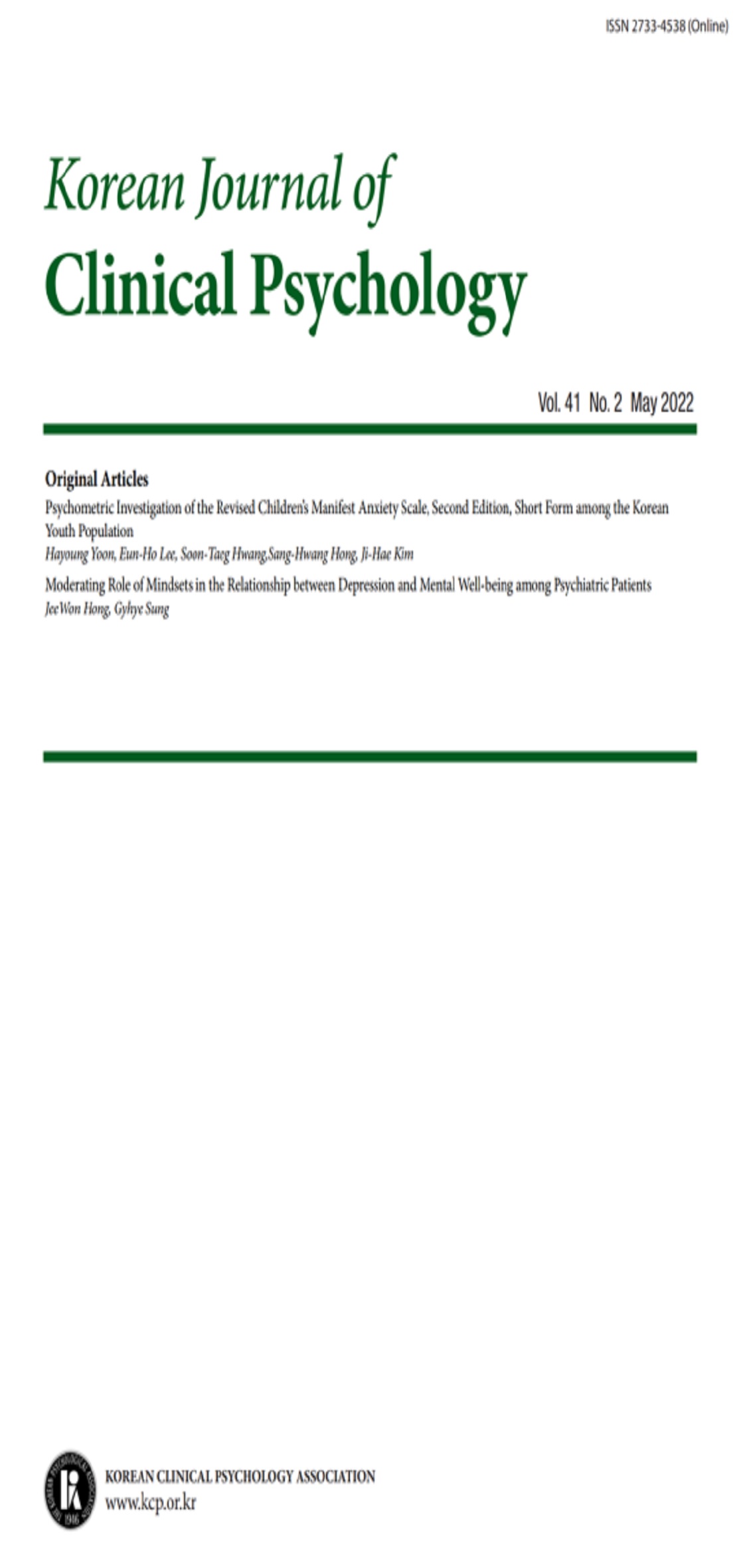open access
메뉴
open access
메뉴 E-ISSN : 2733-4538
E-ISSN : 2733-4538
본 연구는 발표불안과 자기초점적 주의의 관계를 검증하기 위한 것이다. 예비연구에서는 57명의 피험자들이 발표불안 질문지에 의해 발표불안이 높은 집단(30명)과 발표불안이 낮은 집단(25명)으로 할당되었다. 그 결과 발표불안이 높은 사람은 발표때에 발표불안이 낮은 사람보다 불안에 대한 자기 보고, 생리적 반응 및 외현행동에서 보다 더 각성되었다. 또한 불안이 높은 발표자는 자기초점적 주의를 가진 반면, 불안이 낮은 발표자는 외부 초점적 주의를 가지는 경향이 있었다. 이러한 예비연구의 결과를 토대로 본 연구에서는 HR 바이오피드백이 발표불안과 자기초점적 주의에 미치는 효과를 알아보기 위해, 발표불안이 높은 피험자를 HR 바이오피드백 훈련집단과 대기통제집단으로 무선할당하였다. 최종 분석에서, 각 집단의 피험자는 15명으로 모두 30명이었다. 분석 결과, HR 바이오피드백훈련 전에는 두 집단이 불안(주관적, 생리적 및 외현행동)과 자기초점적 주의의 수준에서 차이가 없었다. 그러나 HR 감소 훈련 후, 바이오피드백 훈련집단은 통제집단보다 불안의 정도와 자기초점적주의 수준에서 유의하게 더 감소되었다. 그러므로, HR 바이오피드백 훈련이 효과가 있었다고 할 수 있다. 끝으로, 본 연구의 제한점과 시사점이 논의되었다.
The present study was designed to test the relation of speech anxiety and self-focused attention. In preliminary study, subjects were 57 undergraduate students. Among them 32 subjects were high speech-anxious individuals and 25 subjects were low speech-anxious individuals. The results were as follows. High speech-anxious group was higher than low speech-anxious group in self-report anxiety measures, physiological respons(HR), and overt motor behavior during public speaking performance. Also high anxious speakers pay attention to their self-focused contents. These results indicated that high anxious speakers were more self-focused during their public speaking performance than low anxious speakers, which leading to less effective public speaking performance. The study was them designed to test the effects of HR biofeedback on speech anxiety and self-focused attention. The high speech-anxious individuals were assigned randomly to the HR biofeedback training group and the waiting-list control group. There were 15 subjects in each group. The results were as follows. The HR biofeedback training group was significantly reduced in the their anxiety levels(self-report anxiety measures, HR, and overt motor behavior) and self-focused attention. Finally, implications, restrictions and suggestions of the present study were discussed.
